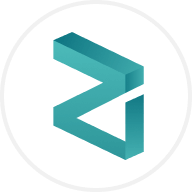In the world of blockchain, scalability has long been a challenge, hindering the widespread adoption of this transformative technology. However, solutions have emerged to address this issue. One such solution is Zilliqa (ZIL). With its innovative protocol, Zilliqa aims to overcome the scalability challenge, opening doors for various sectors to embrace blockchain technology without sacrificing performance.
What is Zilliqa
Zilliqa is a high-performance blockchain platform designed to address the scalability challenges faced by traditional blockchain networks. While its capabilities are related to other blockchains like Ethereum and Solana, Zilliqa employs a unique technique to enhance transaction throughput, allowing a larger number of transactions to be processed simultaneously.
ZIL is the native digital token of the Zilliqa blockchain, officially introduced in 2017. This native token can be used to pay transaction fees on the Zilliqa network.
The ZIL team
Zilliqa was founded in 2017 by researchers Amrit Kumar and Xinshu Dong. The team behind Zilliqa includes two board members, Juzar Motiwalla and Mark Hemsley, as well as seven executives: Tom Fleetham, Bradley Laws, Richard Watts, Advait Gehurye, Alex Spells, Max Kantelia, and Matt Dyer.
How does ZIL work
Zilliqa stands out among its competitors by implementing a technique called sharding, which allows for high transaction throughput. In the sharding process, the Zilliqa blockchain is divided into smaller units called shards. Each node in the network is responsible for storing and processing data related to its assigned shard rather than processing the entire network's load. This efficient approach has made Zilliqa a popular choice for various industries, including financial services, entertainment, and gaming.
Zilliqa has several types of nodes, including seed nodes, DS nodes, lookup nodes, staked seeds nodes, and shard nodes. The Zilliqa testnet currently has 27 validators, and the validator default list is organized by features reward, staked balance, balance, user, delegation address, and balance share.
Zilliqa consensus mechanism
Zilliqa utilizes a distinct consensus mechanism, which combines Practical Byzantine Fault Tolerance (pBFT) and Proof of Work (PoW) to verify transactions on the blockchain. pBFT is a unique consensus mechanism that synchronizes all nodes to ensure that a relatively higher number of nodes agree on data accuracy before storing it on the network.
Zilliqa’s native token: ZIL
ZIL is the native token of Zilliqa, a Layer 1 blockchain.
ZIL tokenomics
The maximum supply of ZIL is set at a fixed amount of 21 billion. The total supply gradually increases over time until it reaches the hard cap of 21 billion. To ensure a sustainable distribution, Zilliqa plans to reserve 20 percent of its ZIL supply until 2027. In the first four years following its inception, approximately 80 percent of the total supply has been mined. This distribution strategy aims to support the long-term growth and stability of the Zilliqa ecosystem.
How is ZIL different from gZIL
ZIL is used to transact on the Zilliqa network and motivate miners to earn block rewards through mining.
On the other hand, gZIL serves as a Zilliqa governance token that allows community members to contribute to the improvement and development of the protocol. Essentially, each user possessing gZIL can actively vote and participate in the platform’s governance. Users can earn gZIL by staking their ZIL tokens.
ZIL use cases
As the native coin of the Zilliqa ecosystem, ZIL is used for crucial purposes such as transaction payment, governance, staking, and more.
Distribution of ZIL
ZIL is distributed as follows:
- 60 percent was pre-mined before Zilliqa’s launch and used to advance the blockchain’s ecosystem.
- 40 percent is reserved as mining and staking rewards.
What lies ahead for Zilliqa
Looking ahead, Zilliqa is poised for continued growth and development. With its pioneering sharded network, ZIL has witnessed widespread adoption and achieved notable valuation. The team behind Zilliqa remains committed to enhancing the network's infrastructure and scalability. Currently, the network processes millions of transactions each month and has significantly increased its block production, now generating up to 2,500 blocks daily. With these advancements, Zilliqa is set to compete with other scalable blockchains in the years to come.




















Socials